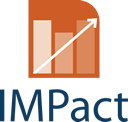How to calculate earn-back effects ?
In this chapter, we focus on the calculation of the earn-back effects, as the gross budgetary cost of a measure depends on the type of subsidy and it is easier to calculate for a Member State.
The earn-back effects depend on the effects that are obtained through the measure. The table below explains in a simplified way how the different earn-back effects should be calculated, depending on the effects that have been obtained.
| Effect obtained | Type of earn-back effect | Way to calculate the earn-back effect | Points for attention |
| Increased incomes | |||
| The creation of (direct and indirect) employment/ Reducing undeclared work | Net increase in social contributions | Number of new jobs created (direct and indirect) * average wage * average social contributions |
|
| Net increase in personal income tax | Number of new jobs created (direct and indirect) * average wage * average personal income tax |
|
|
| Net increase in VAT revenue | Average VAT * consumption rate * average income of new workers – average unemployment benefits |
|
|
| The creation of new companies | Net increase in companies’ taxes | Number of new companies created * average benefits * average company taxes |
|
| Better work-life balance | Net increase in income tax owing to users entering/returning to employment | Average income tax * total income from additional hours of work as a result of PHS |
|
| Avoided costs | |||
| The creation of (direct and indirect) employment/ Reducing undeclared work | Savings in unemployment benefits | Number of new jobs created (direct and indirect) * average unemployment benefit |
|
| Care for a dependent or disabled person | Avoided rest home costs | Number of elderly that stay longer at home * average cost for rest homes |
|
| Avoided health costs/medical expenses | Identification of avoided public medical expenses as a result of care |
|
|
| Avoided nursery costs | Number of children * average cost of a nursery | ||
| Avoided cost of school failure | Number of students that avoided school failure * average cost of failure |
|
|






